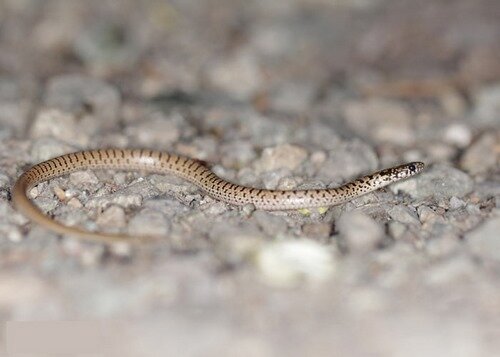Let’s shed our fears to save endangered snakes

TEHRAN – Global warming caused by climate change, overhunting, killing and excessive harvesting of snake venom have devastating effects on the species population.
July 16 happens to be World Snake Day, albeit unofficially. Planet Earth is home to more than 3,500 species of snakes, of which only 600 are venomous. Yet, these slithery, tubular reptiles are almost universally misunderstood — and only a handful of dedicated conservationists trying to protect them.
Barbad Safaei Mahroo, a senior expert on biodiversity, stated that nearly 85 different species of snakes are known in Iran.
One of the most special snakes in Iran is the spider-tailed horned viper, which hunts with its spider-like tail, he noted.
In terms of appearance and diversity, about 90 snake species have been identified in Iran.There are also types of sea snakes in Iran, which are among the most interesting snakes due to their habitat. Mountain vipers are also very important due to the fact that they live in the mountains and in the coldest parts of Iran, they play a very important role in the field of controlling other animals.
Snakes have a high diversity in the country. In terms of appearance and diversity, about 90 snake species have been identified in Iran and they are among the rich species among vertebrates. Some are up to two or three meters long, while some are very small in size and look similar to earthworms, but they have vertebrae and are classified in the snake group.
Stating that snakes, like other animal species, die when the forest is destroyed or a fire occurs, he stated that a study conducted in the western Kordestan province in 2013-2015 shows that the diversity of reptiles in areas that suffer from fires, including snakes and lizards are greatly reduced, and this can be extended to the rest of the reptiles as well.
Most reptiles are more interested in tropical regions and research has shown that they have more diversity in these regions, but the temperature changes in recent years due to industrial development and climate change, have significant destructive effects because a snowy and cold environment suitable for mountain vipers has suddenly turned into a dry or semi-warm environment, which is considered an unsuitable habitat for this species and causes the habitats to become fragmented and will eventually lead to the extinction of the species.
Extinction of snakes causes irreparable damage to ecosystems
Malnutrition and habitat changes have also brought many destructive ecological effects, he lamented.
In Iran, most of the venomous snakes are facing extinction due to being killed by humans, and unsustainable exploitation in order to use their venom to prepare serums has continued for many years and has had a great impact on their population.
However, small species such as worm snakes and Eirenis have survived the extinction, because they are not used for their venom, nor are people afraid to kill them, he said.
Snakes are creatures that are at the top of the food pyramid and hunt other animals, so removing them from nature can cause an outbreak of insects and rodents, which can be very harmful, he said.
Snakes are a great help to farmers and gardeners because they can keep rodents and insects away from gardens, he highlighted, expressing hope that the habitats of Iran do not get sick because the absence of snakes will cause irreparable damage to the ecosystems.
Just like other wildlife, snakes are also negatively impacted by climate change, disease, and habitat loss. Snakes help in maintaining the food web balance, they act as natural pest control and they are essential contributors to maintaining the balance in the natural food chain.
But the need for their conservation and their survival issues are hardly discussed, partly due to a prevailing negative attitude towards snakes and partly due to ignorance. Fear and negligence are the greatest barriers to snake conservation.
World Snake Day brings a great opportunity to shed your fears and let the precious species live.
FB/MG
Leave a Comment